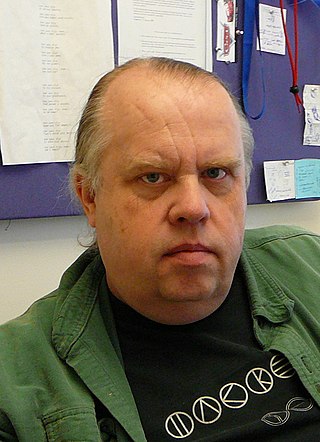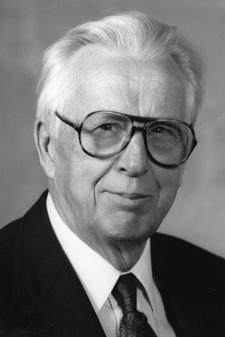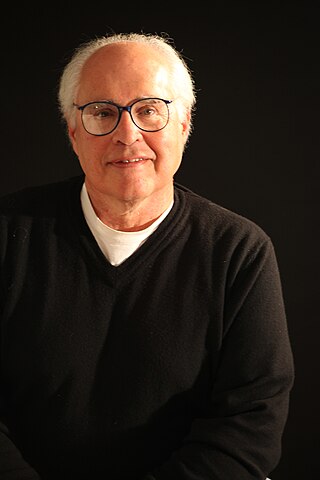Related Research Articles

Morphing is a special effect in motion pictures and animations that changes one image or shape into another through a seamless transition. Traditionally such a depiction would be achieved through dissolving techniques on film. Since the early 1990s, this has been replaced by computer software to create more realistic transitions. A similar method is applied to audio recordings, for example, by changing voices or vocal lines.

Autodesk Maya, commonly shortened to just Maya, is a 3D computer graphics application that runs on Windows, macOS and Linux, originally developed by Alias and currently owned and developed by Autodesk. It is used to create assets for interactive 3D applications, animated films, TV series, and visual effects.

Thomas Douglas Selkirk Duff is a computer programmer.
The Technology and Engineering Emmy Awards, or Technology and Engineering Emmys, are one of two sets of Emmy Awards that are presented for outstanding achievement in engineering development in the television industry. The Technology and Engineering Emmy Awards are presented by the National Academy of Television Arts and Sciences (NATAS), while the separate Primetime Engineering Emmy Awards are given by its sister organization the Academy of Television Arts & Sciences (ATAS).
Pacific Data Images (PDI) was an American computer animation production company based in Redwood City, California, that was bought by DreamWorks SKG in 2000. It was renamed PDI/DreamWorks and was owned by DreamWorks Animation.

Verner Edward Suomi was a Finnish-American educator, inventor, and scientist. He is considered the father of satellite meteorology. He invented the Spin Scan Radiometer, which for many years was the instrument on the GOES weather satellites that generated the time sequences of cloud images seen on television weather shows. The Suomi NPP polar orbiting satellite, launched in 2011, was named in his honor.

Patrick M. Hanrahan is an American computer graphics researcher, the Canon USA Professor of Computer Science and Electrical Engineering in the Computer Graphics Laboratory at Stanford University. His research focuses on rendering algorithms, graphics processing units, as well as scientific illustration and visualization. He has received numerous awards, including the 2019 Turing Award.

Elastic Reality was a warping and morphing software application available on Windows, Macintosh, and Silicon Graphics workstations and was discontinued in 1999.
Ronald Paul "Ron" Fedkiw is a full professor in the Stanford University department of computer science and a leading researcher in the field of computer graphics, focusing on topics relating to physically based simulation of natural phenomena and machine learning. His techniques have been employed in many motion pictures. He has earned recognition at the 80th Academy Awards and the 87th Academy Awards as well as from the National Academy of Sciences.
Jim Rygiel is an American visual effects supervisor. He has worked on major feature films since 1984, including The Lord of the Rings movie trilogy and Godzilla. He currently works at FuseFX visual effects studio.

James F. O'Brien is a computer graphics researcher and professor of computer science and electrical engineering at the University of California, Berkeley. He is also co-founder and chief science officer at Avametric, a company developing software for virtual clothing try on. In 2015, he received an award for Scientific and Technical Achievement from the Academy of Motion Pictures Arts and Sciences.
Boris FX is a visual effects and video editing software plug-in developer based in Boston, Massachusetts, USA. The developer is best known for its four flagship products, Continuum, Sapphire, Mocha, and Silhouette.
SilhouetteFX began as a rotoscoping tool for the visual effects industry. SilhouetteFX has been expanded to include capabilities facilitating paint, warping and morphing, 2D to 3D conversion and alternative matting methods. As of V6, SilhouetteFX retains all of the aforementioned capabilities now embedded in a node-based digital compositing application.
Thomas W. Reps is an American computer scientist known for his contributions to automatic program analysis. Dr. Reps is Professor of Computer Science in the Computer Sciences Department of the University of Wisconsin–Madison, which he joined in 1985. Reps is the author or co-author of four books and more than one hundred seventy-five papers describing his research. His work has covered a wide variety of topics, including program slicing, data-flow analysis, pointer analysis, model checking, computer security, instrumentation, language-based program-development environments, the use of program profiling in software testing, software renovation, incremental algorithms, and attribute grammars.
The Pixar Photoscience Division, a division of Pixar Animation Studios, was founded in 1979 at Lucasfilm for the express purpose of designing and building a laser recorder/scanner system to input and output film to a computer for compositing and color correction of special effects. In the early years of Pixar's history, the team was responsible for the design of color monitoring instrumentation to control the color gamut and gamma of the digital images onto 35mm film using a more advance laser recorder system called PixarVision. In later years at Pixar, the team was responsible for transforming the artists computer-animated images onto film master negatives. Today the team manages all digital content to a variety of delivery media, film, DVD, and digital cinema projection. The team has won Engineering and Technical Academy Awards and patents for their work in Motion Picture Sciences.

Demetri Terzopoulos is a Greek-Canadian-American computer scientist and entrepreneur. He is currently a Distinguished Professor and Chancellor's Professor of Computer Science in the Henry Samueli School of Engineering and Applied Science at the University of California, Los Angeles, where he directs the UCLA Computer Graphics & Vision Laboratory.

Ellis Horowitz is an American computer scientist and Professor of Computer Science and Electrical Engineering at the University of Southern California (USC). Horowitz is best known for his computer science textbooks on data structures and algorithms, co-authored with Sartaj Sahni. At USC, Horowitz was chairman of the Computer Science Department from 1990 to 1999. During his tenure he significantly improved relations between Computer Science and the Information Sciences Institute (ISI), hiring senior faculty, and establishing the department's first industrial advisory board. From 1983 to 1993 with Lawrence Flon he co-founded Quality Software Products which designed and built UNIX application software. Their products included two spreadsheet programs, Q-calc and eXclaim, a project management system, MasterPlan, and a floating license server, Maitre D. The company was sold to Island Graphics.
The Primetime Engineering Emmy Awards, or Engineering Emmys, are one of two sets of Emmy Awards that are presented for outstanding achievement in engineering development in the television industry. The Primetime Engineering Emmys are presented by the Academy of Television Arts & Sciences (ATAS), while the separate Technology and Engineering Emmy Awards are given by its sister organization, the National Academy of Television Arts and Sciences (NATAS).
Rahul Chandrakant Thakkar is an Indian-American software inventor who was one of the 33 recipients of Academy Award for scientific and technical achievement in 2016. Thakkar won the Academy Award for creating the "groundbreaking design" of DreamWorks Animation Media Review System, a scalable digital film review platform.

Vaidyeswaran Rajaraman is an Indian engineer, academic and writer, known for his pioneering efforts in the field of Computer Science Education in India. He is credited with the establishment of the first academic program in computer science in India, which he helped initiate at the Indian Institute of Technology, Kanpur in 1965. An elected fellow of all the Indian science academies, he is a recipient of Shanti Swarup Bhatnagar Prize, the highest Indian award in Science and Technology category for young scientists and several other honors including Om Prakash Bhasin Award and Homi Bhabha Prize. The Government of India awarded him the third highest civilian honor of the Padma Bhushan, in 1998, for his contributions to science.
References
- ↑ "The Amicus Network" . Retrieved 2018-12-25.
- ↑ "Milwaukee Sentinel - March 30, 1995" . Retrieved 2015-06-14.
- ↑ "Variety: Lucky 13 get March 1 salute for inventions" . Retrieved 2015-05-29.
- ↑ "9 SCIENTIFIC AND TECHNICAL ACHIEVEMENTS TO BE HONORED WITH ACADEMY AWARDS" . Retrieved 2018-12-25.
- ↑ "Visual Effects Society Membership Directory" . Retrieved 2012-12-18.
- ↑ "150 Ways the University of Wisconsin - Madison has Touched the World" (PDF). Retrieved 2012-10-02.
- ↑ "Carthage College faculty directory" . Retrieved 2018-03-12.
- ↑ "Discourses and Dialogs on Debugging". Archived from the original on March 10, 2015. Retrieved 2015-03-05.
- ↑ "The Security Digest Archives" . Retrieved 2009-11-22.
- ↑ "Optical Storage Management under the UNIX Operating System" . Retrieved 2014-10-02.
- ↑ "Computer science professor wins Emmy Award®".
- ↑ "Camera motion sensing system".
- ↑ "Computer system and process for defining and manipulating images using structured objects with variable edge characteristics".
- ↑ "Color printing, correction can conversion apparatus and method".